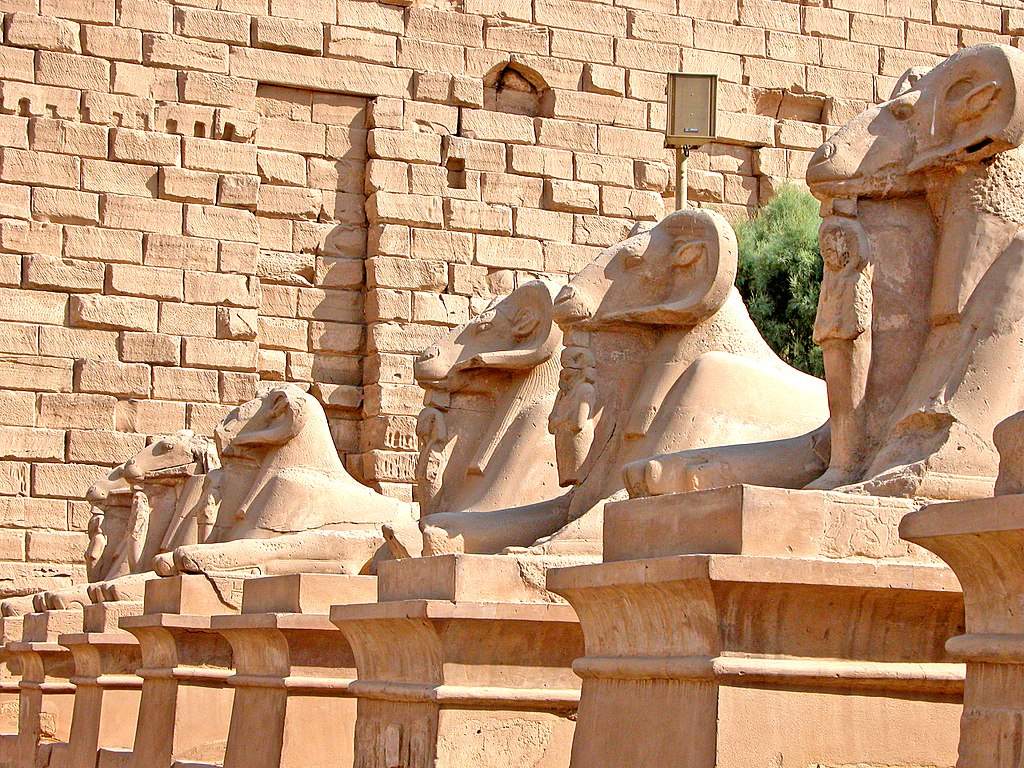Four magnificent ram-headed sphinxes have been moved from the Karnak Temple in Luxor, Egypt, to the center of the Tahrir Square traffic circle in the capital Cairo. This is the unique move by Egypt’s Ministry of Antiquities to promote tourism in the city: the plan involved rearranging the traffic circle of the celebrated square (best known in the international news as the center of major protests in the country in recent years) with a granite obelisk in the center (this is a work dating back to the time of Ramesses II, and comes from the site of St. el-Hagar in northern Egypt), and on the four sides the majestic sandstone sphinxes, in order to make the area more attractive to tourism. The obelisk was transferred to Cairo in mid-February, while the installation of the sphinxes was completed in recent days.
Antiquities Minister Khaled El-Enany explained his move to the Egyptian English-language daily Ahram, “When we go to European capitals like Rome, Paris or London, but also Washington, we see Egyptian obelisks decorating the main tourist squares, why can’t we do the same?” The minister added that the will is to “turn Tahrir Square into one of the main tourist destinations in Cairo, and in a month all the work on decorating this internationally important square will be completed.”
Of course, archaeologists have expressed views strongly against the move, bordering on disgust. Egyptologist Monica Hanna let the Guardian know that the scholarly community opposes the move because of “concerns about safeguarding these objects from pollution in Tahrir Square and about the threat to the historical integrity of the Karnak temple.” Tahrir Square is in fact one of the busiest thoroughfares of Cairo’s chaotic traffic, plus the operation has no historical or scientific basis whatsoever; on the contrary: the relocation took place in defiance of any good practice of preserving the integrity of monuments.
Member of Parliament Ahmed Idris of the center-right Wafd party has already addressed an urgent question to Prime Minister Mostafa Kamal Madbouly asking for enlightenment about the relocation. “This operation,” Idris said, “violates all international standards on the preservation of antiquities and historic buildings, it also violates the Egyptian Antiquities Law which prohibits the use of ancient objects for decorative works that could damage their historic value. The obelisk and sphinxes will be exposed to air pollution and major climate alterations that will surely harm their value. It would have been better if the minister had first consulted with the citizens of Luxor or held a design ideas competition for Tahrir Square. Or, he could have asked Egyptian sculptors to make replicas of the obelisk and the four sphinxes, instead of relocating the originals.”
There are also those who fear that, in reality, the new makeup of Tahrir Square hides a political operation, to erase the memory of the protests in the square, particularly those of 2011, namely those that led to the end of Hosni Mubarak’s regime. The operation, Professor Rabab El Mahdi, professor of political science at the American University in Cairo, also told the Guardian, “will cover recent memory, which is still alive in many people’s minds, with historical objects that have no political connotation.” According to El Mahdi, the installation of the sphinxes “basically denotes no respect for the people who witnessed the revolution and see it as part of contemporary history, no respect for those who died, and no respect for antiquities.” However, the Egyptian government is intent on going ahead with the operation, and soon the new Tahrir Square will be inaugurated.
In the images below: Tahrir Square as it is now and how it will look when the work is completed, and some sphinxes from the Karnak temple similar to those moved to Cairo (ph. Dennis Jarvis).
 |
 |
| Egypt, four sphinxes from Luxor moved to the middle of a traffic circle in Cairo. Archaeologists are disgusted |
Warning: the translation into English of the original Italian article was created using automatic tools. We undertake to review all articles, but we do not guarantee the total absence of inaccuracies in the translation due to the program. You can find the original by clicking on the ITA button. If you find any mistake,please contact us.